Alkaline Electrolysis
Proton Exchange Membrane Electrolysis
Solid Oxide Electrolysis
Hydrogen Production
Energy Storage
Fuel Cells
Industrial
Transportation
Power Generation
Small Scale
Medium Scale
Large Scale
North America
Europe
South America
Asia Pacific
Middle East and Africa
North America Outlook (USD Billion, 2019-2035)
North America Water Electrolysis Market by Technology Type
Alkaline Electrolysis
Proton Exchange Membrane Electrolysis
Solid Oxide Electrolysis
North America Water Electrolysis Market by Application Type
Hydrogen Production
Energy Storage
Fuel Cells
North America Water Electrolysis Market by End Use Type
Industrial
Transportation
Power Generation
North America Water Electrolysis Market by Electrolyzer Size Type
Small Scale
Medium Scale
Large Scale
North America Water Electrolysis Market by Regional Type
US
Canada
US Outlook (USD Billion, 2019-2035)
US Water Electrolysis Market by Technology Type
Alkaline Electrolysis
Proton Exchange Membrane Electrolysis
Solid Oxide Electrolysis
US Water Electrolysis Market by Application Type
Hydrogen Production
Energy Storage
Fuel Cells
US Water Electrolysis Market by End Use Type
Industrial
Transportation
Power Generation
US Water Electrolysis Market by Electrolyzer Size Type
Small Scale
Medium Scale
Large Scale
CANADA Outlook (USD Billion, 2019-2035)
CANADA Water Electrolysis Market by Technology Type
Alkaline Electrolysis
Proton Exchange Membrane Electrolysis
Solid Oxide Electrolysis
CANADA Water Electrolysis Market by Application Type
Hydrogen Production
Energy Storage
Fuel Cells
CANADA Water Electrolysis Market by End Use Type
Industrial
Transportation
Power Generation
CANADA Water Electrolysis Market by Electrolyzer Size Type
Small Scale
Medium Scale
Large Scale
Europe Outlook (USD Billion, 2019-2035)
Europe Water Electrolysis Market by Technology Type
Alkaline Electrolysis
Proton Exchange Membrane Electrolysis
Solid Oxide Electrolysis
Europe Water Electrolysis Market by Application Type
Hydrogen Production
Energy Storage
Fuel Cells
Europe Water Electrolysis Market by End Use Type
Industrial
Transportation
Power Generation
Europe Water Electrolysis Market by Electrolyzer Size Type
Small Scale
Medium Scale
Large Scale
Europe Water Electrolysis Market by Regional Type
Germany
UK
France
Russia
Italy
Spain
Rest of Europe
GERMANY Outlook (USD Billion, 2019-2035)
GERMANY Water Electrolysis Market by Technology Type
Alkaline Electrolysis
Proton Exchange Membrane Electrolysis
Solid Oxide Electrolysis
GERMANY Water Electrolysis Market by Application Type
Hydrogen Production
Energy Storage
Fuel Cells
GERMANY Water Electrolysis Market by End Use Type
Industrial
Transportation
Power Generation
GERMANY Water Electrolysis Market by Electrolyzer Size Type
Small Scale
Medium Scale
Large Scale
UK Outlook (USD Billion, 2019-2035)
UK Water Electrolysis Market by Technology Type
Alkaline Electrolysis
Proton Exchange Membrane Electrolysis
Solid Oxide Electrolysis
UK Water Electrolysis Market by Application Type
Hydrogen Production
Energy Storage
Fuel Cells
UK Water Electrolysis Market by End Use Type
Industrial
Transportation
Power Generation
UK Water Electrolysis Market by Electrolyzer Size Type
Small Scale
Medium Scale
Large Scale
FRANCE Outlook (USD Billion, 2019-2035)
FRANCE Water Electrolysis Market by Technology Type
Alkaline Electrolysis
Proton Exchange Membrane Electrolysis
Solid Oxide Electrolysis
FRANCE Water Electrolysis Market by Application Type
Hydrogen Production
Energy Storage
Fuel Cells
FRANCE Water Electrolysis Market by End Use Type
Industrial
Transportation
Power Generation
FRANCE Water Electrolysis Market by Electrolyzer Size Type
Small Scale
Medium Scale
Large Scale
RUSSIA Outlook (USD Billion, 2019-2035)
RUSSIA Water Electrolysis Market by Technology Type
Alkaline Electrolysis
Proton Exchange Membrane Electrolysis
Solid Oxide Electrolysis
RUSSIA Water Electrolysis Market by Application Type
Hydrogen Production
Energy Storage
Fuel Cells
RUSSIA Water Electrolysis Market by End Use Type
Industrial
Transportation
Power Generation
RUSSIA Water Electrolysis Market by Electrolyzer Size Type
Small Scale
Medium Scale
Large Scale
ITALY Outlook (USD Billion, 2019-2035)
ITALY Water Electrolysis Market by Technology Type
Alkaline Electrolysis
Proton Exchange Membrane Electrolysis
Solid Oxide Electrolysis
ITALY Water Electrolysis Market by Application Type
Hydrogen Production
Energy Storage
Fuel Cells
ITALY Water Electrolysis Market by End Use Type
Industrial
Transportation
Power Generation
ITALY Water Electrolysis Market by Electrolyzer Size Type
Small Scale
Medium Scale
Large Scale
SPAIN Outlook (USD Billion, 2019-2035)
SPAIN Water Electrolysis Market by Technology Type
Alkaline Electrolysis
Proton Exchange Membrane Electrolysis
Solid Oxide Electrolysis
SPAIN Water Electrolysis Market by Application Type
Hydrogen Production
Energy Storage
Fuel Cells
SPAIN Water Electrolysis Market by End Use Type
Industrial
Transportation
Power Generation
SPAIN Water Electrolysis Market by Electrolyzer Size Type
Small Scale
Medium Scale
Large Scale
REST OF EUROPE Outlook (USD Billion, 2019-2035)
REST OF EUROPE Water Electrolysis Market by Technology Type
Alkaline Electrolysis
Proton Exchange Membrane Electrolysis
Solid Oxide Electrolysis
REST OF EUROPE Water Electrolysis Market by Application Type
Hydrogen Production
Energy Storage
Fuel Cells
REST OF EUROPE Water Electrolysis Market by End Use Type
Industrial
Transportation
Power Generation
REST OF EUROPE Water Electrolysis Market by Electrolyzer Size Type
Small Scale
Medium Scale
Large Scale
APAC Outlook (USD Billion, 2019-2035)
APAC Water Electrolysis Market by Technology Type
Alkaline Electrolysis
Proton Exchange Membrane Electrolysis
Solid Oxide Electrolysis
APAC Water Electrolysis Market by Application Type
Hydrogen Production
Energy Storage
Fuel Cells
APAC Water Electrolysis Market by End Use Type
Industrial
Transportation
Power Generation
APAC Water Electrolysis Market by Electrolyzer Size Type
Small Scale
Medium Scale
Large Scale
APAC Water Electrolysis Market by Regional Type
China
India
Japan
South Korea
Malaysia
Thailand
Indonesia
Rest of APAC
CHINA Outlook (USD Billion, 2019-2035)
CHINA Water Electrolysis Market by Technology Type
Alkaline Electrolysis
Proton Exchange Membrane Electrolysis
Solid Oxide Electrolysis
CHINA Water Electrolysis Market by Application Type
Hydrogen Production
Energy Storage
Fuel Cells
CHINA Water Electrolysis Market by End Use Type
Industrial
Transportation
Power Generation
CHINA Water Electrolysis Market by Electrolyzer Size Type
Small Scale
Medium Scale
Large Scale
INDIA Outlook (USD Billion, 2019-2035)
INDIA Water Electrolysis Market by Technology Type
Alkaline Electrolysis
Proton Exchange Membrane Electrolysis
Solid Oxide Electrolysis
INDIA Water Electrolysis Market by Application Type
Hydrogen Production
Energy Storage
Fuel Cells
INDIA Water Electrolysis Market by End Use Type
Industrial
Transportation
Power Generation
INDIA Water Electrolysis Market by Electrolyzer Size Type
Small Scale
Medium Scale
Large Scale
JAPAN Outlook (USD Billion, 2019-2035)
JAPAN Water Electrolysis Market by Technology Type
Alkaline Electrolysis
Proton Exchange Membrane Electrolysis
Solid Oxide Electrolysis
JAPAN Water Electrolysis Market by Application Type
Hydrogen Production
Energy Storage
Fuel Cells
JAPAN Water Electrolysis Market by End Use Type
Industrial
Transportation
Power Generation
JAPAN Water Electrolysis Market by Electrolyzer Size Type
Small Scale
Medium Scale
Large Scale
SOUTH KOREA Outlook (USD Billion, 2019-2035)
SOUTH KOREA Water Electrolysis Market by Technology Type
Alkaline Electrolysis
Proton Exchange Membrane Electrolysis
Solid Oxide Electrolysis
SOUTH KOREA Water Electrolysis Market by Application Type
Hydrogen Production
Energy Storage
Fuel Cells
SOUTH KOREA Water Electrolysis Market by End Use Type
Industrial
Transportation
Power Generation
SOUTH KOREA Water Electrolysis Market by Electrolyzer Size Type
Small Scale
Medium Scale
Large Scale
MALAYSIA Outlook (USD Billion, 2019-2035)
MALAYSIA Water Electrolysis Market by Technology Type
Alkaline Electrolysis
Proton Exchange Membrane Electrolysis
Solid Oxide Electrolysis
MALAYSIA Water Electrolysis Market by Application Type
Hydrogen Production
Energy Storage
Fuel Cells
MALAYSIA Water Electrolysis Market by End Use Type
Industrial
Transportation
Power Generation
MALAYSIA Water Electrolysis Market by Electrolyzer Size Type
Small Scale
Medium Scale
Large Scale
THAILAND Outlook (USD Billion, 2019-2035)
THAILAND Water Electrolysis Market by Technology Type
Alkaline Electrolysis
Proton Exchange Membrane Electrolysis
Solid Oxide Electrolysis
THAILAND Water Electrolysis Market by Application Type
Hydrogen Production
Energy Storage
Fuel Cells
THAILAND Water Electrolysis Market by End Use Type
Industrial
Transportation
Power Generation
THAILAND Water Electrolysis Market by Electrolyzer Size Type
Small Scale
Medium Scale
Large Scale
INDONESIA Outlook (USD Billion, 2019-2035)
INDONESIA Water Electrolysis Market by Technology Type
Alkaline Electrolysis
Proton Exchange Membrane Electrolysis
Solid Oxide Electrolysis
INDONESIA Water Electrolysis Market by Application Type
Hydrogen Production
Energy Storage
Fuel Cells
INDONESIA Water Electrolysis Market by End Use Type
Industrial
Transportation
Power Generation
INDONESIA Water Electrolysis Market by Electrolyzer Size Type
Small Scale
Medium Scale
Large Scale
REST OF APAC Outlook (USD Billion, 2019-2035)
REST OF APAC Water Electrolysis Market by Technology Type
Alkaline Electrolysis
Proton Exchange Membrane Electrolysis
Solid Oxide Electrolysis
REST OF APAC Water Electrolysis Market by Application Type
Hydrogen Production
Energy Storage
Fuel Cells
REST OF APAC Water Electrolysis Market by End Use Type
Industrial
Transportation
Power Generation
REST OF APAC Water Electrolysis Market by Electrolyzer Size Type
Small Scale
Medium Scale
Large Scale
South America Outlook (USD Billion, 2019-2035)
South America Water Electrolysis Market by Technology Type
Alkaline Electrolysis
Proton Exchange Membrane Electrolysis
Solid Oxide Electrolysis
South America Water Electrolysis Market by Application Type
Hydrogen Production
Energy Storage
Fuel Cells
South America Water Electrolysis Market by End Use Type
Industrial
Transportation
Power Generation
South America Water Electrolysis Market by Electrolyzer Size Type
Small Scale
Medium Scale
Large Scale
South America Water Electrolysis Market by Regional Type
Brazil
Mexico
Argentina
Rest of South America
BRAZIL Outlook (USD Billion, 2019-2035)
BRAZIL Water Electrolysis Market by Technology Type
Alkaline Electrolysis
Proton Exchange Membrane Electrolysis
Solid Oxide Electrolysis
BRAZIL Water Electrolysis Market by Application Type
Hydrogen Production
Energy Storage
Fuel Cells
BRAZIL Water Electrolysis Market by End Use Type
Industrial
Transportation
Power Generation
BRAZIL Water Electrolysis Market by Electrolyzer Size Type
Small Scale
Medium Scale
Large Scale
MEXICO Outlook (USD Billion, 2019-2035)
MEXICO Water Electrolysis Market by Technology Type
Alkaline Electrolysis
Proton Exchange Membrane Electrolysis
Solid Oxide Electrolysis
MEXICO Water Electrolysis Market by Application Type
Hydrogen Production
Energy Storage
Fuel Cells
MEXICO Water Electrolysis Market by End Use Type
Industrial
Transportation
Power Generation
MEXICO Water Electrolysis Market by Electrolyzer Size Type
Small Scale
Medium Scale
Large Scale
ARGENTINA Outlook (USD Billion, 2019-2035)
ARGENTINA Water Electrolysis Market by Technology Type
Alkaline Electrolysis
Proton Exchange Membrane Electrolysis
Solid Oxide Electrolysis
ARGENTINA Water Electrolysis Market by Application Type
Hydrogen Production
Energy Storage
Fuel Cells
ARGENTINA Water Electrolysis Market by End Use Type
Industrial
Transportation
Power Generation
ARGENTINA Water Electrolysis Market by Electrolyzer Size Type
Small Scale
Medium Scale
Large Scale
REST OF SOUTH AMERICA Outlook (USD Billion, 2019-2035)
REST OF SOUTH AMERICA Water Electrolysis Market by Technology Type
Alkaline Electrolysis
Proton Exchange Membrane Electrolysis
Solid Oxide Electrolysis
REST OF SOUTH AMERICA Water Electrolysis Market by Application Type
Hydrogen Production
Energy Storage
Fuel Cells
REST OF SOUTH AMERICA Water Electrolysis Market by End Use Type
Industrial
Transportation
Power Generation
REST OF SOUTH AMERICA Water Electrolysis Market by Electrolyzer Size Type
Small Scale
Medium Scale
Large Scale
MEA Outlook (USD Billion, 2019-2035)
MEA Water Electrolysis Market by Technology Type
Alkaline Electrolysis
Proton Exchange Membrane Electrolysis
Solid Oxide Electrolysis
MEA Water Electrolysis Market by Application Type
Hydrogen Production
Energy Storage
Fuel Cells
MEA Water Electrolysis Market by End Use Type
Industrial
Transportation
Power Generation
MEA Water Electrolysis Market by Electrolyzer Size Type
Small Scale
Medium Scale
Large Scale
MEA Water Electrolysis Market by Regional Type
GCC Countries
South Africa
Rest of MEA
GCC COUNTRIES Outlook (USD Billion, 2019-2035)
GCC COUNTRIES Water Electrolysis Market by Technology Type
Alkaline Electrolysis
Proton Exchange Membrane Electrolysis
Solid Oxide Electrolysis
GCC COUNTRIES Water Electrolysis Market by Application Type
Hydrogen Production
Energy Storage
Fuel Cells
GCC COUNTRIES Water Electrolysis Market by End Use Type
Industrial
Transportation
Power Generation
GCC COUNTRIES Water Electrolysis Market by Electrolyzer Size Type
Small Scale
Medium Scale
Large Scale
SOUTH AFRICA Outlook (USD Billion, 2019-2035)
SOUTH AFRICA Water Electrolysis Market by Technology Type
Alkaline Electrolysis
Proton Exchange Membrane Electrolysis
Solid Oxide Electrolysis
SOUTH AFRICA Water Electrolysis Market by Application Type
Hydrogen Production
Energy Storage
Fuel Cells
SOUTH AFRICA Water Electrolysis Market by End Use Type
Industrial
Transportation
Power Generation
SOUTH AFRICA Water Electrolysis Market by Electrolyzer Size Type
Small Scale
Medium Scale
Large Scale
REST OF MEA Outlook (USD Billion, 2019-2035)
REST OF MEA Water Electrolysis Market by Technology Type
Alkaline Electrolysis
Proton Exchange Membrane Electrolysis
Solid Oxide Electrolysis
REST OF MEA Water Electrolysis Market by Application Type
Hydrogen Production
Energy Storage
Fuel Cells
REST OF MEA Water Electrolysis Market by End Use Type
Industrial
Transportation
Power Generation
REST OF MEA Water Electrolysis Market by Electrolyzer Size Type
Small Scale
Medium Scale
Large Scale
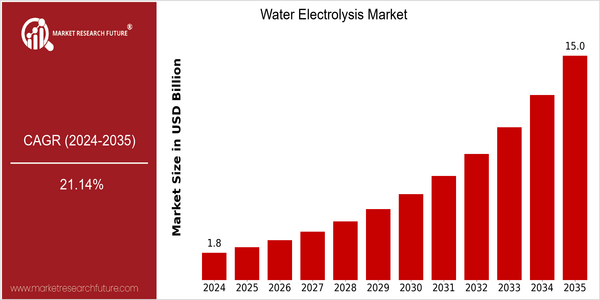
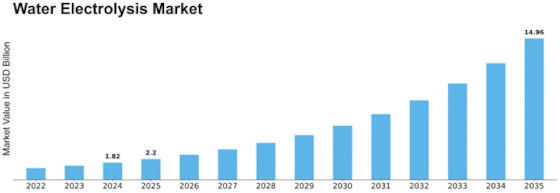

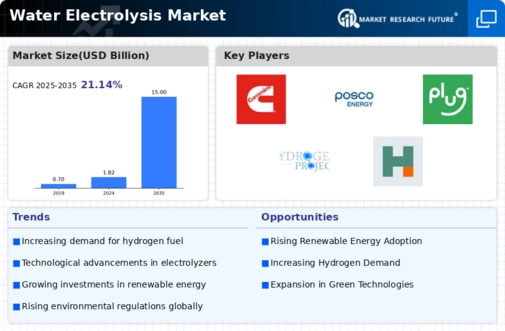




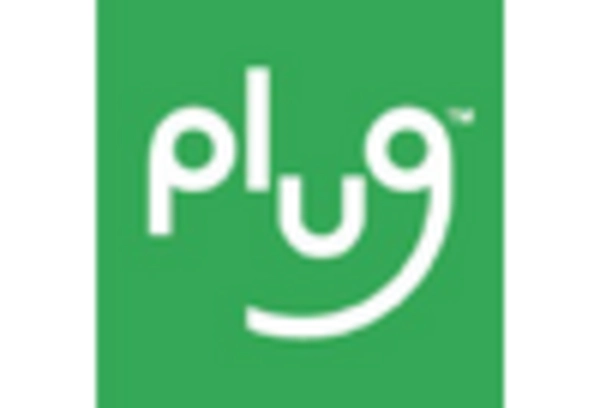
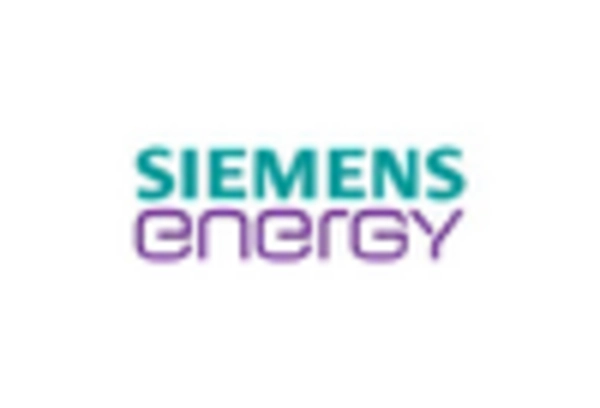









Leave a Comment